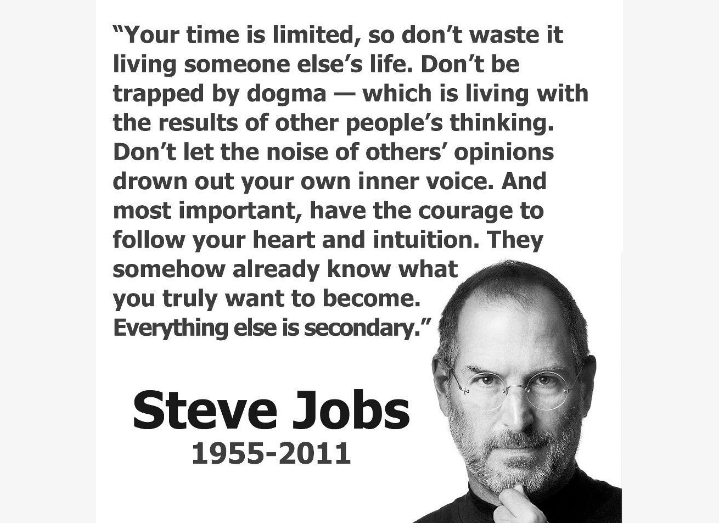leadership qualities
How to Set Goals: Your Goals Begin With You!
Over the last few weeks, I’ve been posting about How To Set Goals. I believe that goal-setting is one of the most important skills a leader can learn. So far we’ve outlined the 4 CRUCIAL QUALITIES OF AN EFFECTIVE GOAL. They are:
1. YOUR GOAL MUST BE POSITIVE
2. YOUR GOAL MUST BE SPECIFIC
3. YOUR GOAL MUST BE REACHABLE
4. YOUR GOAL MUST BE PERSONAL
However, before you begin our goal setting adventure, I want you to familiarize yourself with what I call, “The Law of Motivation”— A concept I came up with over 15 years ago when I developed my first programs on goal-setting for leaders. Who knew it would stick? I adapted it from that well-known 17th century scientist, Sir Issac Newton. Remember him? He’s the guy who discovered gravity when an apple fell on his head. Well, he also developed the groundbreaking First Law of Motion. It states that:
“An object at rest will remain at rest until acted upon by an outside force.”
This means that unless you live on a hill, a bowling ball sitting on your front lawn is not going to roll away by itself. Similarly, goals cannot be accomplished unless we put them into action.
Thus, we transform the Law of Motion into the Law of Motivation.
For our scenario, we will apply this scientific Law to Motivation and your life as a leader; the object will be defined as your goal—that tangible you want to have come true. It could be anything, depending on your stage of life or circumstances: the type of person you want to be, the grades you want to achieve, the friends you want to make, the job you want to land, the college you want to attend, the success of your next big project, the money you want to earn… because when you invent your future:
Defining your goal is as simple as that! Don’t know what your goal is yet? Examine your strengths and weaknesses. Consider your likes and dislikes. Reflect on your values. You’ll find it! This process requires time and deep thinking, so don’t gloss over it. When it comes to your goals, you must know and feel confident about what YOU want. So what does your goal have to do with motivation? Let’s take a hard look at what it means. The root of the word motivation is motive. Here’s how the dictionary defines motive:
“Motive: something causing or able to cause motion.”
Before you can motivate yourself, you must have a motive—something to get you going. If you have no object, or goal, you have nothing to put into motion.
So, to start, this Law of Motivation tells us:
“Your goals and dreams will remain at rest unless acted upon by an outside force.”
The second part of this law talks about an outside force. That’s where your motivation comes into play. You are that force.
Just as nobody can decide your goals for you, neither can somebody achieve them for you, nor can your goals fulfill themselves.
Although you may be surrounded by people who love you and want you to succeed in your life, they don’t care about your goals as much as you do. They can’t. They aren’t you. Most people are busy enough as it is trying to get their own goals into motion to give yours the attention that it needs—and that it deserves. Nobody can get your object into motion except you. That’s why the Law of Motivation ultimately says:
“Your goal is not going anywhere until you take responsibility and move it yourself!”
Sounds simple, doesn’t it? Well, it is! The basics of goal-setting have been around for generations. It’s one of the tenets of leadership. However, studies show that still less than three percent of people use goal-setting skills where, and when, it really counts.
So many people walk through their world, subconsciously thinking, “I hope I end up somewhere good.” But they do not intentionally make a plan to get to that “good” place. Many years later they look back and wonder why their hopes and dreams are not actualized. This should come as no surprise.
How can you end up somewhere good if you have no idea where (or what) good is?

That’s what goal setting is all about – not letting life and chance decide where you end up; instead purposefully transform hopes and dreams into achievable goals.
Remember the three percent of individuals who do set goals? Among them you’ll find the top achievers and leaders of this world. It wasn’t magic or happenstance. They harnessed their internal motivation and focused their efforts for proper goal setting.
This is the Law of Motivation in action. Like other scientific laws, this process does not only work in a few random instances. It can be replicated by anyone who desires their dreams to come true and sets out to achieve their goals.
Next: Your Inner Critic: 4 Words That Sabotage Goals
Do you have and tips or tricks on how to reinforce your goals and stay motivated to stay on the path to achieving your goal? Please share your ideas with us in the comments section below!
A Guide to Goal Setting
Be it professional, academic, or personal, effective goal setting is easier said than done. Your goals can only turn into reality, if they were set correctly in the first place. Before you embark on setting your life goals, read through this guide to ensure you’re your goals are set in the right direction.
Determine what your goals should be.
Do this by allowing some time for contemplation, and thinking what is important to you. Brainstorm and list down all the things and targets you would want to achieve and eventually shortlist the most important ones.
Set your goals to be high in quality, not quantity.
Having a list of 20+ goals may not only be overwhelming to look at, but holds a higher chance to demotivate and slack you. To ensure accomplishing them, focus on the most important of your goals, which should ideally be 5-7 in number and be concise enough to be stored in your memory.
Make sure your goal setting is S.M.A.R.T.
That being said, S.M.A.R.T. goals refer to goals that are:
Specific:
To make your goals turn into reality, you need to identify what you exactly need to accomplish and set a course of action accordingly. Be as specific and unambiguous as you can when setting your goals, for example, ‘travel and explore’ may be too wide and vague a goal, but narrowing it down to ‘Travel and explore the historical cities of Europe’ may add some direction and precision to it.
Measurable:
Having a measurable goal is necessary to be able to track your progress and decide on future strategies to move towards it. If you wish to buy your own apartment worth $20,000, a measurable goal would be to save $5000 each year for four years and break it down into monthly savings to enable you to plan your expenses and keep an account of your savings.
Achievable:
Let your goals start with an action verb to make them attainable. Instead of formulating a goal to ‘be more consistent in Math grades’, make it more achievable by rephrasing it as ‘Solve two sample papers each week to obtain better grades in Math’
Realistic:
While an ambitious goal setting should call for getting out of your comfort zone and aiming high, one has to ensure that the goals are sensible and practical. Aiming to reach the top ten employees in your first month at work may prove to be too imaginative, work towards improving your productivity and getting a name under notable achievements for the month instead.
Time-constrained:
While “I will lose 20 pounds” maybe achievable and measurable, it does not provide a time limit to achieve. Planning to lose 20 pounds in four months makes the goal time bound and dividable into smaller monthly goals, hence making it more specific and reachable.
Write them down and review them frequently.
Once you have your goals written down, you have half the action plan to achieve them. Writing your goals down reassures you of your intention to make them happen and sets things in motion. A written goal also serves as an effective reminder and progress tracker. Review your goals regularly and evaluate your current progress towards achieving it, and determine your next steps to move towards them. It depends on your individual preference to review them daily, weekly or monthly, but make sure to keep yourself inspired, motivated and well-reminded of your objectives.
Avoid going public with your goals.
Remember they are your goals and should remain personal to you. No one else can associate the same feelings of enthusiasm, dedication and commitment to your goals. Unless you think that sharing them with a certain person, an expert, mentor, business partner or group leader, for example, may help you achieve your goals, avoid sharing them with others as it may make them less likely to materialize.
How To Set Goals | Goal Setting Fundamentals
“A leader is one who knows the way, goes the way, and shows the way.”
— John C. Maxwell
⇒ Leaders Set Goals
Do you consider yourself a leader?
Sometimes we associate leaders with high-profile, powerful positions.
• The CEO of a Company.
• The Principal of a School.
• The President of the United States
And yes, these people are leaders. But you don’t have to be rich, famous, or powerful to be a leader. You just need to be a person who leads.
Leaders are needed in all areas of life — in families, amongst friends, on teams, in the workplace, and on campus.
They’re the ones that open doors for others to follow and set the standards by which we live.
Leaders can possess a variety of different characteristics and personality traits. They might be driven, intelligent, creative, hard-working, charismatic, or even domineering. But the similarity that one can find amongst almost every leader… THEY HAVE GOALS!
“You can practice shooting eight hours a day, but if your technique is wrong, then all you become is very good at shooting the wrong way. Get the fundamentals down and the level of everything you do will rise.”
—Michael Jordan
⇒ Fundamentals of Effective Goal Setting
In goal setting, technique is everything!
When I hear people explain that they are having trouble with accomplishing their goals, it is usually because they started off wrong from the beginning. They had bad goals. I don’t mean the things they wanted were bad. It’s just that they didn’t set their goals up for success.
A goal is more likely to be accomplished if it’s designed with these qualities in mind:
1. YOUR GOAL MUST BE POSITIVE
2. YOUR GOAL MUST BE SPECIFIC
3. YOUR GOAL MUST BE REACHABLE
4. YOUR GOAL MUST BE PERSONAL
If your goal doesn’t satisfy these four requirements, you might run into some trouble along the way. Over the next few posts, we’ll take a closer look at these characteristics that differentiate a good goal from a bad goal.
NEXT UP: How To Set Goals Quality #1: Make Your Goal Positive
Do you have any favorite goal-setting lessons, quotes, games, or activities that you use to teach goal-setting? Maybe you know a great tip to help eager goal-setters reach their goals faster? Leave your comments below!
I look forward to a great goal-setting discussion!
Leadership Game | Words of Wisdom Student Leadership Quote Game
Leadership Game | Words of Wisdom Student Leadership Quote Game
[divider height=”30″ line=”1″]
Description
Students walk around the room reading a series of posters, each which display a different quote highlighting a possible quality of a leader (quotes provided). Every student chooses a quote to stand by that illustrates the concept of leadership closest to their own beliefs. A discussion of leadership qualities proceeds from there.
Purpose
This is a great lead-in to discussing qualities of a leader with your students. The students begin by reading and thinking about leadership concepts and philosophies as spoken by some of our world’s greatest leaders. They continue with a discussion on the various qualities of leaders and identify their own leadership beliefs and styles.
Materials Required
- Scotch Tape
- 15-20 signs with leadership quotes – 20 Awesome Leadership Quotes PDF
- Optional but recommended: A whiteboard to right down leadership quality answers
Time to Play
30-45 minutes
[divider height=”30″ line=”1″]
INSTRUCTIONS
The set-up:
-
Print out 20 Awesome Leadership Quotes PDF .
- Depending on the size of your group, pick out 10-20 quotes that you would like to use for your game.
- Tape the quotes on the walls in no particular order. Several students may gather around certain quotes, so leave plenty of room between each poster.
The game:
- Ask the participants to leave their chairs and walk around the room reading each of the quotes.
- Instruct them to choose and stand by one quote that best relates to their own view on what makes a good leader.
- When everyone has selected a quote, have them discuss among others who chose the same quote why that quote is important to them. Note: the number of participants gathered around each quote will likely vary.
- Encourage the group to share their own leadership experiences that illustrate their quote.
- Each quote group will then select a member who will share the groups view and give examples.
- Have each group’s spokesperson explain to the rest of the room the reason behind their choice using some of the examples provided by the group. Talk about the importance of the identified leadership skill.
- Proceed moving from quote to quote allowing each group to answer and discuss their leadership beliefs as it relates to their quote.
[divider height=”30″ line=”1″]
DISCUSSION IDEAS
If possible, write your key ideas on the white board. These can launch further discussion questions or a lead-in to additional leadership content.
1. Ask the students to identify and discuss each of the core leadership concepts illustrated within each quote. Lead a discussion on which concepts are important to leadership. Encourage your student leaders to use specific and personal examples.
2. Discuss with your class the importance of each of these leadership qualities as they apply to student leadership and leading a campus. Ask “Are there some qualities more important than others?” “Why?”
3. Illustrate common or hypothetical challenges that your student leaders might face as they fulfill their role as a leader on campus. Have your students identify and discuss which leadership qualities might be useful to handle each situation.
4. Ask “What are the benefits of working as a leadership team as we proceed to lead our campus?” “Is a combination of student leaders and student council officers with different strengths more beneficial than one leader in complete control of the leadership vision?”
5. With your leadership qualities identified and written on the whiteboard, ask your group to call out the names of leaders both admired and hated that exhibit some of these leadership qualities and write them on the board. You will hear names of both popular leaders like Martin Luther King and Mahatma Gandhi as well as some leaders not so admired. Discuss how these leaders were effective leaders no matter if we agree with their leadership goals and direction. For example, Adolf Hitler may have been an evil man but he certainly had strong belief in his vision, his ability to move a nation, as well as other leadership qualities.
6. The 20 Leadership Quotes PDF includes the quote: “Leadership is something I was born with.” If you choose to use this quote in your game it can be a great lead-in to the sometimes controversial discussion whether leaders or born or made.
[divider height=”30″ line=”1″]
COMMENTS
- Ideas stick better when accompanied by a personal example. Your students will gain greater retention of your discussion points when they accompany their basic answers with an example or descriptive story, hypothetical or real, that involves how they have or will use their leadership skills in a personal away. Encourage this sort of response and ask follow up questions if you must.
- Use this as a anti-bullying game! Switch out the leadership quotes for quotes relating to respect, tolerance, and other key words that can lead to anti-bullying discussion.
- A better formatted version of leadership quotes PDF coming soon!
- New at leading group games? Check out this article that explains the simple secrets that will leave you leading games like a pro! Playing With A Purpose: Simple Secrets To Leadership Games That teach And Inspire
• • • •
Do you have a great follow up discussion question or idea that would add to this activity? Do you know a variation or game twist not included here? Or perhaps you know a different game or activity that leadership teachers and trainers could use as a starting point to discuss leadership qualities and leadership styles with their students. Let us know! We want to hear from you!
Public Speaking 101
Your purpose is to make your audience see what you saw, hear what you heard, feel what you felt. Relevant detail, couched in concrete, colorful language, is the best way to recreate the incident as it happened and to picture it for the audience – Dale Carnegie
If facing a large audience gives you shivers, and the thought of public speaking gives you pangs of nervousness, make sure to follow these basic guidelines before you prepare for your next public speech or presentation.
Make the introduction gripping, and the content clear and concise
The content of your speech is the backbone of your success. Remember that first impressions are the last ones too, and aim to capture the attention of your listeners with your first expression. Starting with an inspirational quote, or a relevant short story, may work well to grip an audience. Ryan McLean highlights the importance of a captivating beginning by saying, “Your introduction needs to establish with the audience why it is important to them and why they should be listening to the speech.”
That being said, the quality of the main body is equally essential to ensure a successful outcome. The success of your presentation will be judged not by the knowledge you send out, but by what the listeners grasp from your words. Be understandable and assertive on your viewpoints; make sure you speak slowly, clearly, and thoughtfully. Keep the content to the point, avoid beating about the bush, and keep in mind the difference between a lecture and a speech. When determining the length of your content, take a hint from Dorothy Sarnoff’s advice, “Make sure you have finished speaking before your audience has finished listening.”
Confidence, composure, and poise
Undoubtedly, the most feared words of public speaking. You may be trying your best to avoid eye contact or imagining there is no one in the room, but as dreaded as it is, eye contact and speaking with confidence is extremely vital for an exceptional public act. It is absolutely vital for a public speaker to know the difference between ‘public reading’ and ‘public speaking’. Your audience is not there to watch your head hanging down as you read from a piece of paper. Make sure to be well-dressed, keep your hands out of your pocket, and stand tall and erect without moving a lot.
Public speaking is only 10% what you deliver and 90% how you deliver. Make sure you have researched well on your facts and figures, and confidently convey it to your listeners to make them believe in your potential and credibility. Keep it engaging and smooth by focusing your gaze on the audience as you speak and redirecting it to different listeners through the act.
Stay calm under unexpected problems
Broken multimedia, faulty projectors and whistling speakers are a common sight at conferences and corporate meetings. It is completely normal to experience technology hitches, unforeseen accidents, unnecessary interruptions, or simply going blank during your speech, or presentation. Stay calm under pressure, crack a joke, avoid being over apologetic, and most importantly never bury your face in your hands! Express your need for a pause to recollect your thoughts and resume once you are ready. Your tactful demeanor and quick recovery from a setback may leave your audience even more impressed.











